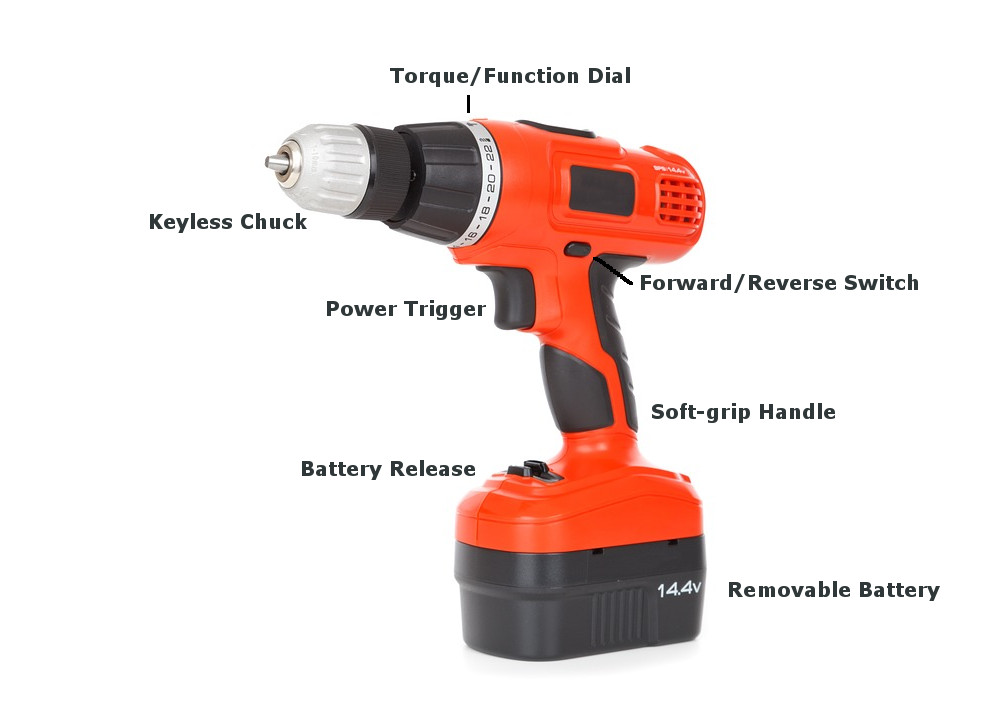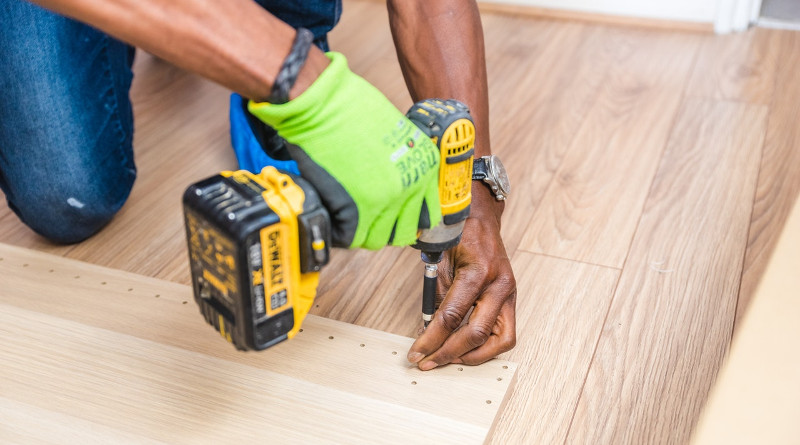A good-quality and reliable cordless drill is a DIY toolbox essential, even for those who do little more than hang the occasional shelf or put some flat-pack furniture together.
There are literally hundreds of different models of cordless drills available, ranging from the very cheap to the extremely expensive.
Features can vary greatly, as can the build quality, so understanding what you need and what to look for in a cordless drill is important for any DIY-er.
Cordless Drill Features to Consider
- Battery Voltage and Capacity – A 14 or 18V battery, with at least 4Ah capacity, should be capable of most DIY jobs around the home and garden.
- Drill and Battery Weight – It is worth thinking about the weight of the drill, especially if you will be using it for prolonged periods. Try out a few different drills in a DIY store if you think weight will be a factor.
- Integrated Light – Many cordless drills will have a small, forward-facing light built into the body, which activates when drilling. This is very handy when drilling in dark spaces.
- Soft-grip Handle – Most cordless drills will feature a rubberised handle, to make it easier to hold for long periods. It is a pretty standard feature, so if the drill you are looking at doesn’t have it, perhaps wonder why.
- Variable Torque – Again, several torque settings are fairly standard on cordless drills. You will, however, find differences in the number of different torque settings (as few as 6, and as many as 20). Look for at least 10-12.
- Hammer Action – Not all drills will have a hammer setting, particularly the cheaper, low-voltage drills. The hammer action is used when drilling into masonry and stone and is a very useful feature to have.
- Keyless Chuck/Chuck Size – Again most modern drills have a keyless chuck (loosened and tightened by hand). The chuck size will vary, so if you plan to be drilling holes over 10mm, make sure you can fit larger bits into the chuck.

Cordless Drill Batteries
Most modern cordless drills will have a standard rechargeable lithium-ion (Li-Ion) battery, but there are a variety of different Voltages and capacities available.
Cordless Drill Battery Voltages – The voltage of a cordless drill battery determines the power output. The minimum voltage you will see in a cordless drill battery is probably 12V, rising up to around 18V (but possibly as high as 36 or 54V in some professional-quality cordless SDS drills). Anything lower than 12V will be more suited as a cordless screwdriver than a drill.
As a general rule, the higher the voltage, the more powerful the drill, and the more capable it will be to handle heavier tasks such as drilling into stone. 18V cordless drills used to be A LOT more expensive than 12V or 14V drills, but you can now find some 18V drills for less than £50.
Think about the sorts of jobs you will likely to be doing, and if there is nothing heavy-duty, you can probably get a better quality 12 or 14V drill for the same price as a low-quality 18V drill.
Cordless Drill Battery Capacity – The capacity of a battery, shown by the Ah number, determines how long the drill can perform on a single charge, and can sometimes affect how quickly the battery can be recharged. The range of battery capacities run from as low as 1.5Ah, right up to 9Ah, with an average being between 2 and 4Ah. Higher voltage drills normally have higher capacity batteries, and 18V drill batteries should have at least 4Ah capacity.
Spare Batteries – More expensive cordless drills will sometimes come with a spare battery, so you can have one charging whilst the other is in use. Particularly useful if you are planning on doing lots of drilling in a short space of time.
What Are SDS Drills?
An SDS drill is more suited to heavy-duty work, especially drilling into stone and masonry. SDS stands for Slotted Drive System and allows for the drill bit to move a lot more than a standard drill bit. This means it can create a heavier hammer action, and can even be used with chisel bits.
SDS drills are generally more expensive than the equivalent standard cordless drills, and tend to be aimed more are professional users (tradesmen, etc.,) SDS drills will almost always have an 18V and 4Ah battery, which is much more capable of handling the heavier work.
If you are looking at buying an SDS drill, expect to pay at least £100-£150 for a decent quality tool. If you just need the capability of SDS for a single task, it will probably be cheaper to hire one for a day.
How to Choose Drill Bits – Learn more about the different types of drill bits available for your DIY projects.
Difference Between a Combi-Drill and Drill-Driver
The two main types of cordless drills are combination (combi) drills, and drill-drivers. The main difference is that drill-drivers are designed for drilling holes and driving screws into wood and metal, but don’t normally have the hammer action setting that combination drills have.
Drill-drivers are usually smaller and lighter than combi drills, but if you think you will ever need to drill into stone or masonry (assuming you only want one cordless drill) go for a combi drill.
Cordless Drill Torque Settings
There are two main things to consider when looking at the torque specification of a cordless drill: Maximum torque and the number of torque settings.
Maximum Torque – The maximum torque of a drill is the highest amount of rotational force the drill can output. This is important to note if you are buying a drill for concrete or stone drilling, and should be considered along with whether the drill has hammer action.
Torque Settings – Torque settings on a drill allow you to tighten and loosen screws without stripping the head, by allowing the drive shaft to “slip” when a certain amount of rotational torque is applied. A standard amount of torque settings is 10, usually controlled by turning a numbered collar below the chuck.







